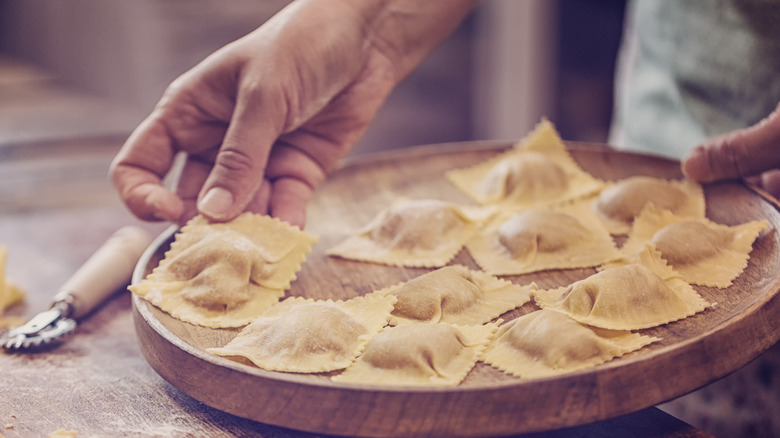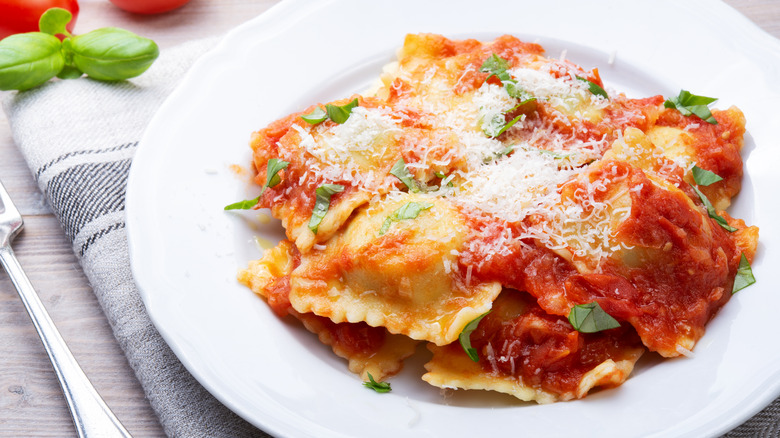For The Best Texture In Ravioli, Cook Your Meat Fillings First
Scratch-made pasta is far superior to any store-bought brand and well worth the effort. A stuffed pasta like ravioli may sound more daunting to prepare than fettuccine or lasagna sheets, but we've consulted an expert for helpful tips to make the journey easy and delicious. Jasper J. Mirabile Jr., owner and chef at Jasper's Restaurant in Kansas City and host of "Live from Jasper's Kitchen Radio," sat down with Tasting Table for an in-depth lesson on everything ravioli.
Ravioli consists of both pasta and filling, both of which are equally important contributors to overall texture. Chef Mirabile asserts that precooked fillings are not only key to the best texture, but also the best flavor in ravioli. "I always use braised beef or veal for my filling ... that's already been prepared so it really never needs to be cooked any longer than the pasta itself being boiled." Fresh ravioli only takes between 2 and 4 minutes to cook, which is shorter than most fillings will take to cook. Additionally, braising beef or veal infuses it with complex flavors while also making it super tender, for a melt-in-your-mouth filling, that's far tastier than boiling it inside the pasta parcel to cook.
Ravioli is therefore also great way to repurpose leftovers from a luxurious osso buco (braised veal) meal or the last portion of some rich red-wine braised beef short ribs. Chef Mirabile emphasises that this slow-cooked meat will have "a deeper flavor" to make a tastier filling. More to Mirabile's point, a precooked filling makes it "easier to cook the whole ravioli [because] you're just cooking the pasta only."
Ravioli cooking tips from chef Mirabile
Ravioli may consist of pasta and filling, but it is just another type of pasta with the same foundational ingredients: A simple blend of flour, eggs, olive oil, and salt. Consequently, preparing and cooking ravioli is similar to all pasta shapes. Pasta dough requires plenty of kneading and a 30-minute rest period for proper hydration and the development of an elastic, pliable texture. Ravioli dough should be rolled quite thin to create a pouch that's chewy but also snaps open easily to reveal the filling.
Fresh ravioli will cook quickly, but chef Jasper J. Mirabile Jr. stresses the importance of pasta and water ratios, saying, "Make sure you have at least 4 to 6 quarts of water per a pound of pasta. That sounds like a lot, but believe me it works." When we add pasta to boiling water, it reduces the temperature of the water which causes it to stop boiling. A large ratio of water to pasta means that there's more boiling water to maintain those high temperatures once the pasta is added, resulting in faster and even cooking. Before adding the pasta, be sure to salt the boiling water.
Chef Mirabile's final tip: "Aim for al dente!" Since fresh pasta cooks so quickly, you should start testing your ravioli for that firm, chewy texture within a couple of minutes of adding it to the pot.

